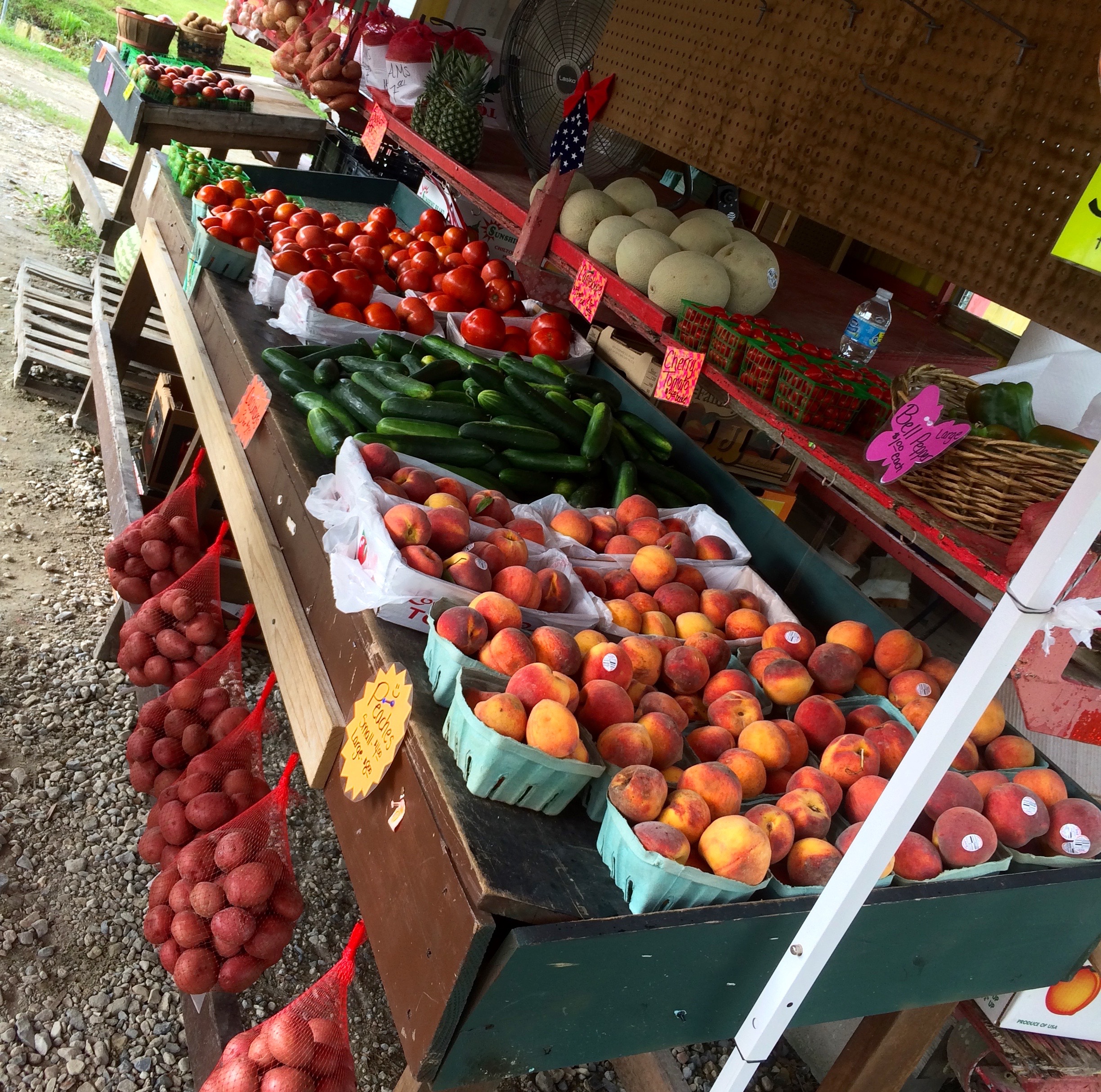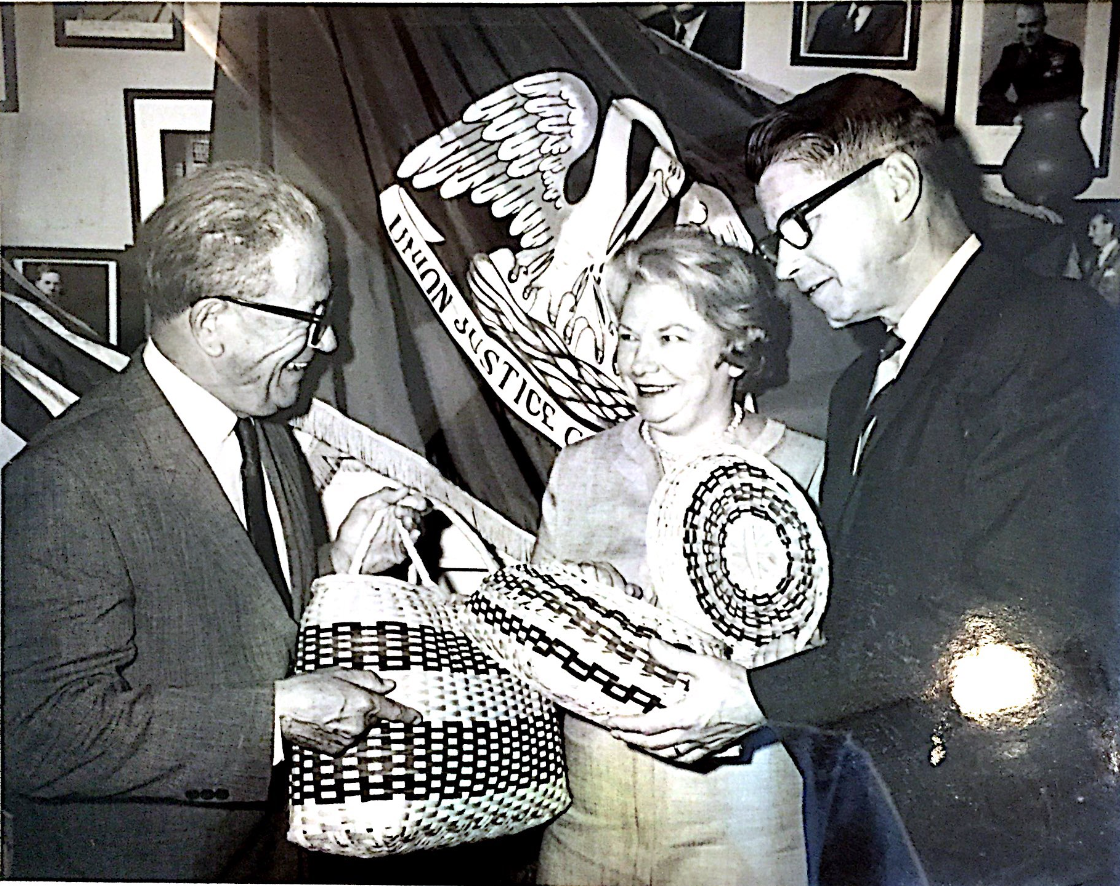 The picture above shows a produce stand on Louisiana Highway 90 that has become my favorite stopping point halfway between the Pointe-au-Chien Tribal Building where I work as a research assistant, and New Orleans, where I live. On my way home in the afternoons, I buy two peaches for a buck to eat in the car, pass some time chatting with the owners, and sample wild cajun foods like spicy pickled quail eggs and okra jelly (though skeptical at first, I now highly recommend both if you can get your hands on them). While halfway between work and home, I also find myself halfway between the start and end of my internship with the Tribe. While preparing for the beginning of my position this summer, I wrote five learning objectives to help me stay focused between long hours in the archives, torrential afternoon downpours, and the ever-present southern heat. My goals for this summer have been:
The picture above shows a produce stand on Louisiana Highway 90 that has become my favorite stopping point halfway between the Pointe-au-Chien Tribal Building where I work as a research assistant, and New Orleans, where I live. On my way home in the afternoons, I buy two peaches for a buck to eat in the car, pass some time chatting with the owners, and sample wild cajun foods like spicy pickled quail eggs and okra jelly (though skeptical at first, I now highly recommend both if you can get your hands on them). While halfway between work and home, I also find myself halfway between the start and end of my internship with the Tribe. While preparing for the beginning of my position this summer, I wrote five learning objectives to help me stay focused between long hours in the archives, torrential afternoon downpours, and the ever-present southern heat. My goals for this summer have been:
- To gain a greater appreciation for how the Pointe-au-Chien Indian Tribe celebrates its culture and how I, from a different cultural background, can respectfully appreciate it as well
- To develop historic and ethnographic archival research skills with applications to current and developing issues
- To grow professionally as a research assistant
- To development skills as a feminist researcher for further application in my academic career
- To understand ways of applying my research skills respectfully and effectively within a community belonging to a cultural background different from my own
Throughout this summer, these objectives have taken their shapes in surprising ways. I have learned so much through the people I’ve surrounded myself with this summer and from the places my research has taken me. I have learned how to crack my first crab shell, about the strong ties between people and their places, and about a complex and rich history between tribal groups across Louisiana. I have learned how to access and find my way through special collections, and that archival research can sometimes be like looking for a needle in a haystack, but uncovering something useful makes everything worth it. In my time as a research assistant, I have been learning how I fit into my position as a feminist, and how my ideals fit into how I serve this community. It’s been exciting to explore these goals so far this summer, and I look forward to exploring them further!
A project my research partner and I have been working on involves Indians in lower Terrebonne and Lafourche Parishes. Our search brought us to Nicholls State University, in Thibodaux, Louisiana. We were looking for a picture numbered 516 of Louisiana Senator Allen J. Ellender holding some Indian-made palmetto baskets, to show evidence of Indian presence and interaction with outside governing bodies during the time that the photograph was taken. The archivist at Nicholls State reported to us that he found picture 513, 514, 515… 517, and 518, but no 516. He directed us to Southdown Plantation, Ellender’s original home in Houma, Louisiana, where Ellender’s Senate office is being recreated. When we arrived at the plantation, the office was not open, and all of the photographs inside were sitting in dusty stacks on the carpet. With help from the plantation’s staff, we dug through the piles of photographs and finally found our missing picture!

As the summer moves on, all of the pieces we uncover in all of the archives are starting to make more and more sense. Like puzzle pieces, our research is starting to fit together: family trees are connecting, names are becoming familiar, and facts are finding their places. We can tell that we’re learning and growing in this project as we make more and more connections between the old, the new, and the yet-to-be-discovered. Our project is constantly evolving, and it’s exciting to be a part of something that’s always moving forward.
Beyond our work, it’s exciting to be a part of a project that involves so many inspiring women. Two other research assistants working for the tribe, in addition to myself, are female, and our project managers and legal consultation are female as well. Not only are they female, but many of the women I work with are also Tribe members, therefore minorities, which presents additional challenges for them. In a white, male-dominated research field, and in a community where many families depend on men literally putting the food on the table as they work in the Gulf’s seafood industry, these women work tirelessly on a project that is integral to the entire Tribe.While many people are involved with the Tribe’s application for Federal Recognition, it would not be what it is today without these women. In addition to the fantastic women leading us in our project, a few female volunteers have come in to learn from us, as well. It is rewarding to be a part of a group of women who learn from each other to work towards a greater goal for a greater community.
Looking forward from now, the end of my time with the Tribe is approaching quickly. After the summer ends, I am excited to start my sophomore year with new skills in archival research and data collection that I will use throughout the rest of my academic career. As I hope to end up continuing in research, I expect to use these skills and my experiences working with such incredible women as guidance throughout my professional career. Beyond academics and research, I have made connections and friends that I expect to keep and cherish for a very long time. But for now, I still have a little time left as a research assistant, and I plant to spend it uncovering more history, learning from the inspiring women around me, and eating peaches on my ride home.
